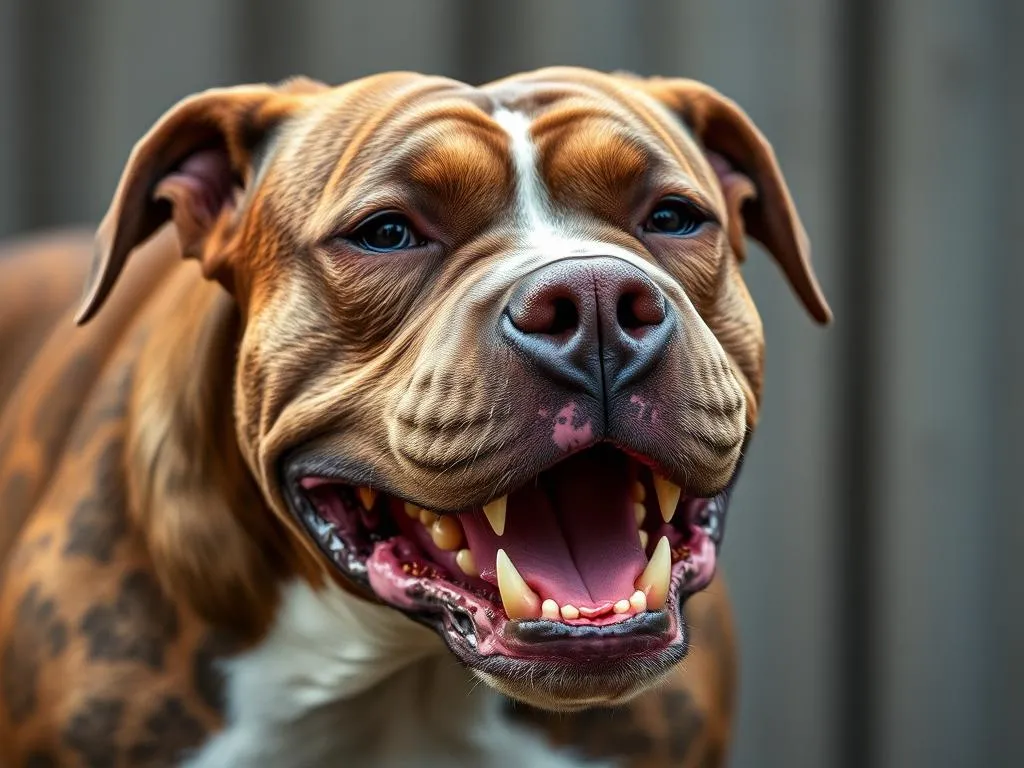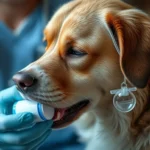
Understanding the pit bull bite force is crucial not just for breed enthusiasts, but for anyone who interacts with dogs. While the bite force of a dog may seem like a straightforward measurement, it involves various factors and can often lead to misconceptions about specific breeds, particularly pit bulls.
Understanding Dog Bite Force
Definition of Bite Force
Bite force refers to the pressure exerted by a dog’s jaw when it bites down. This force is typically measured in pounds per square inch (PSI), a unit that quantifies how much pressure a dog can apply with its bite. For example, a dog might have a bite force of 200 PSI, indicating that it can exert 200 pounds of pressure in a one-square-inch area.
Factors Influencing Bite Force
Several factors influence a dog’s bite force, including:
- Size and Breed: Larger breeds generally have stronger jaws and, therefore, a higher bite force. Breeds like Rottweilers and German Shepherds often rank high in bite force comparisons.
- Age and Health: Younger dogs may have stronger bites, but health issues can weaken a dog’s bite over time. A dog in pain or discomfort may also bite harder due to stress or fear.
- Training and Temperament: A well-trained dog is less likely to bite unless provoked. Temperament plays a significant role, as some breeds are more prone to aggressive behavior.
- Feeding and Nutrition: A dog that receives proper nutrition is generally healthier overall, which can affect its strength, including bite force.
The Science Behind Bite Force Measurement
Tools and Methods for Measuring Bite Force
Measuring bite force involves specialized tools designed to capture the pressure exerted during a bite. Common methods include:
- Bite Sleeves: These are padded sleeves worn by trainers to safely assess a dog’s bite force.
- Force Gauges: Devices that measure the amount of pressure applied during a bite can provide specific PSI readings.
Comparative Analysis of Bite Forces in Different Breeds
To put the pit bull bite force into context, it’s helpful to compare it with other breeds. Research suggests that:
- Pit Bull: Approximately 235 PSI
- Rottweiler: Around 328 PSI
- German Shepherd: Approximately 238 PSI
While pit bulls rank high on the list, they are not the highest among dog breeds, indicating that their bite force is substantial but not unique.
The Myth vs. Reality of Pit Bull Bite Force
Common Misconceptions About Pit Bulls
Pit bulls often face negative stereotypes, frequently portrayed as aggressive or dangerous. This reputation can be traced back to media portrayals that emphasize attacks while ignoring responsible ownership and training. Understanding the pit bull bite force within a broader context is vital to dispelling these myths.
Actual Bite Force of Pit Bulls
The factual data indicates that while pit bulls possess a robust bite force, it is comparable to several other breeds. This fact often gets overlooked in discussions surrounding the breed. A pit bull’s bite force of around 235 PSI is substantial, yet not overwhelmingly so compared to some other breeds.
The Role of Training and Socialization
Training plays a crucial role in a dog’s behavior. Proper training can lead to enhanced bite inhibition, allowing a dog to learn when to bite and when not to. Socialization is equally important; exposure to various people, environments, and experiences can greatly reduce the likelihood of aggressive behavior.
Safety and Prevention Measures
Understanding Dog Behavior
Recognizing signs of aggression in dogs is essential for safety. Common signs include:
- Growling
- Bared teeth
- Stiff body posture
- Ears pinned back
Learning to read a dog’s body language helps prevent incidents before they escalate.
Tips for Pit Bull Owners
For pit bull owners, implementing effective training strategies is key to reducing biting incidents:
- Positive Reinforcement: Reward desired behaviors to encourage good habits.
- Consistent Training: Regular training sessions help reinforce commands and behavior patterns.
- Socialization Practices: Introduce your pit bull to new environments, people, and other animals to foster adaptability.
Community Awareness
Educating the public about pit bulls and advocating for responsible pet ownership can mitigate misunderstandings and promote a safer community. Awareness campaigns can help change the narrative surrounding pit bulls, emphasizing the importance of proper training and socialization.
When to Seek Professional Help
Recognizing Behavioral Issues
Certain signs indicate that a pit bull may be experiencing behavioral problems:
- Sudden aggression
- Fearful or anxious behavior
- Inconsistent obedience
If you notice these signs, it may be time to consult with a veterinarian or an animal behaviorist.
Potential Health Concerns
Health problems can also lead to biting behavior. Conditions causing pain or fear can make any dog more prone to biting. Regular veterinary check-ups are crucial for maintaining your dog’s overall health and addressing any issues before they escalate into behavioral problems.
Conclusion
Understanding the pit bull bite force is essential for responsible ownership and public safety. While pit bulls possess a significant bite force, it is essential to recognize that this does not define their behavior. Proper training, socialization, and an understanding of canine behavior can mitigate risks and enhance the bond between humans and dogs. By educating ourselves and others, we can foster a more informed and compassionate perspective on pit bulls and their capabilities.
FAQs
How does a pit bull’s bite force compare to other breeds?
A pit bull’s bite force is around 235 PSI, making it comparable to breeds like the German Shepherd. However, it is less than that of a Rottweiler, which has a bite force of approximately 328 PSI.
Can a pit bull be trained not to bite?
Yes, a pit bull can be trained not to bite. Positive reinforcement training and socialization can help instill good behavior and reduce the likelihood of aggressive actions.
What are the legal implications of owning a pit bull?
Legal implications vary by location and may include breed-specific legislation. It is essential to research local laws regarding pit bull ownership and any requirements for training or insurance.
How can I ensure my pit bull is well-socialized?
To ensure your pit bull is well-socialized, expose them to various environments, people, and other animals from a young age. Puppy classes and supervised playdates can also enhance socialization efforts.









